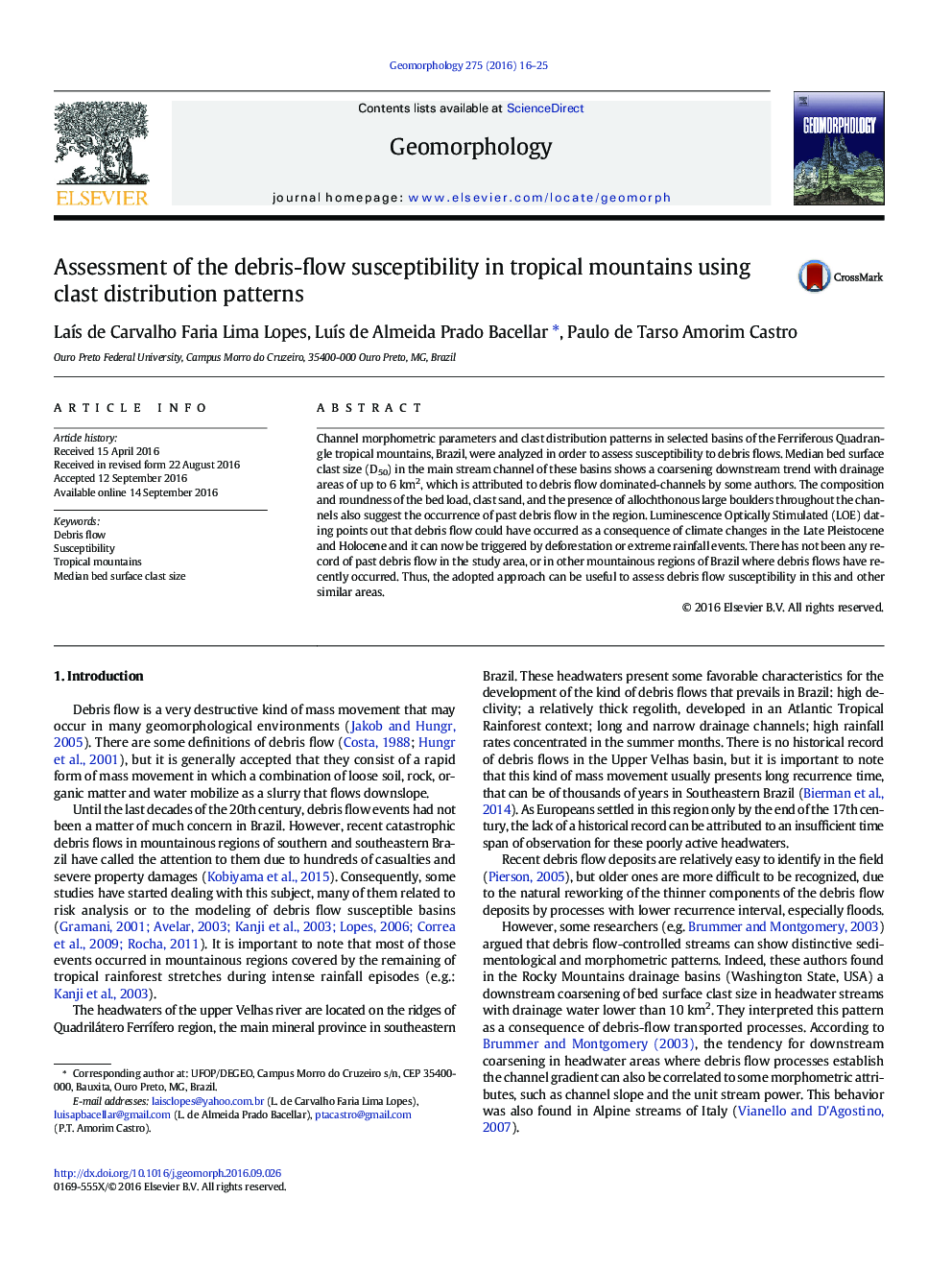| Article ID | Journal | Published Year | Pages | File Type |
|---|---|---|---|---|
| 4683875 | Geomorphology | 2016 | 10 Pages |
Channel morphometric parameters and clast distribution patterns in selected basins of the Ferriferous Quadrangle tropical mountains, Brazil, were analyzed in order to assess susceptibility to debris flows. Median bed surface clast size (D50) in the main stream channel of these basins shows a coarsening downstream trend with drainage areas of up to 6 km2, which is attributed to debris flow dominated-channels by some authors. The composition and roundness of the bed load, clast sand, and the presence of allochthonous large boulders throughout the channels also suggest the occurrence of past debris flow in the region. Luminescence Optically Stimulated (LOE) dating points out that debris flow could have occurred as a consequence of climate changes in the Late Pleistocene and Holocene and it can now be triggered by deforestation or extreme rainfall events. There has not been any record of past debris flow in the study area, or in other mountainous regions of Brazil where debris flows have recently occurred. Thus, the adopted approach can be useful to assess debris flow susceptibility in this and other similar areas.
